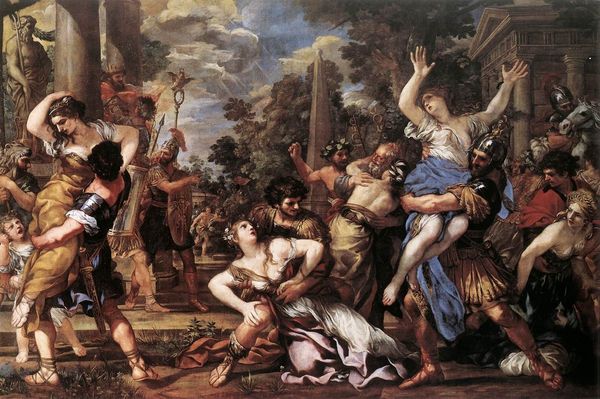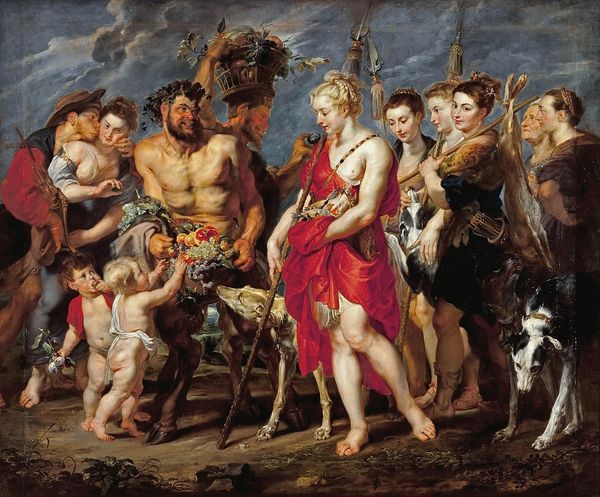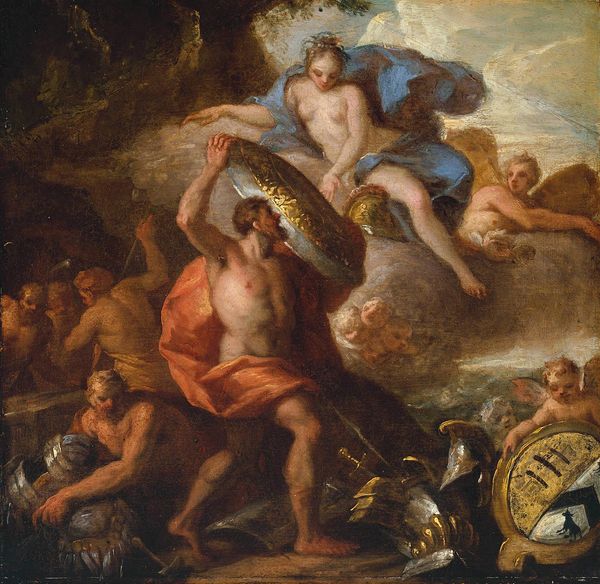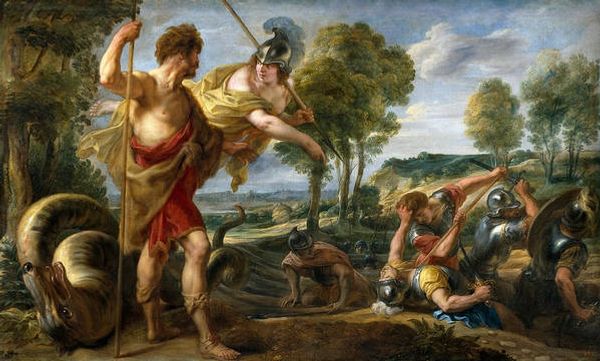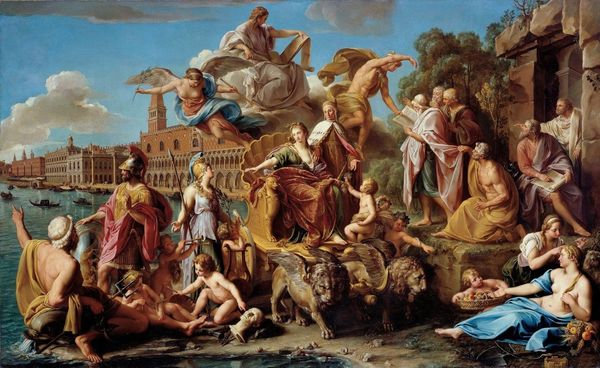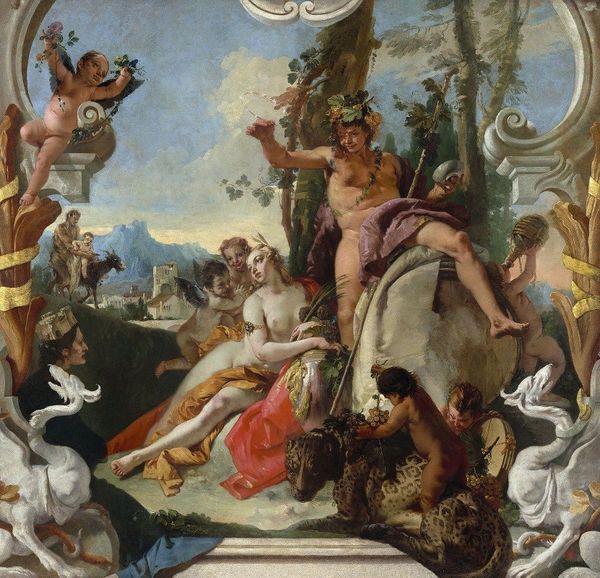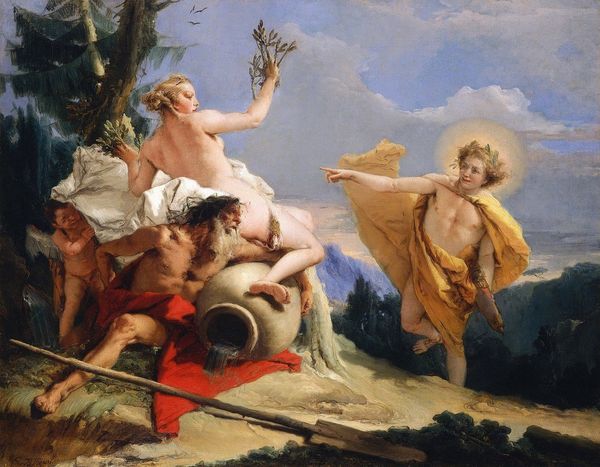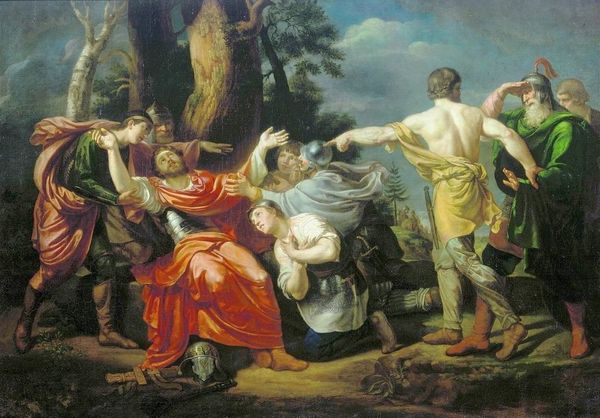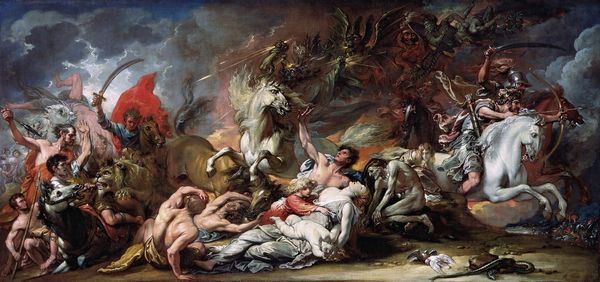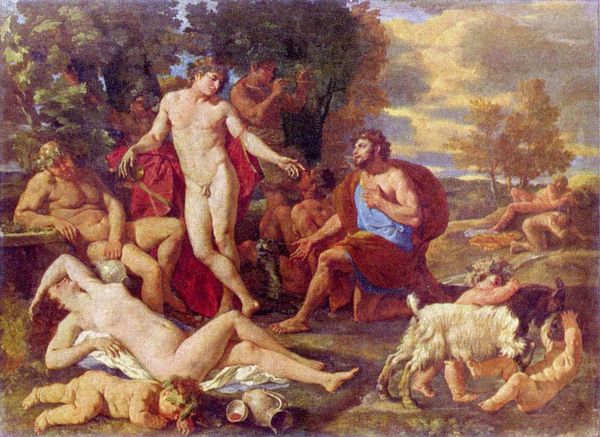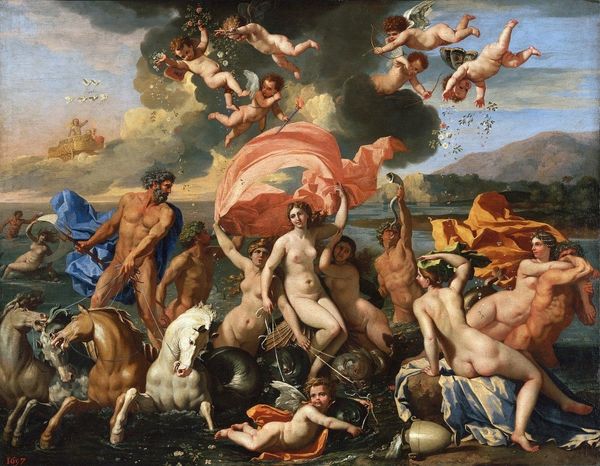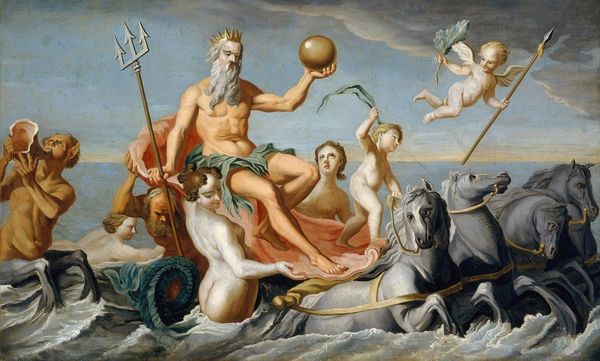
Venus Presenting Arms to Aeneas 1639
0:00
0:00
nicolaspoussin
Musée des Beaux-Arts de Rouen, Rouen, France
painting, oil-paint
#
allegory
#
baroque
#
painting
#
oil-paint
#
sculpture
#
figuration
#
roman-mythology
#
underpainting
#
mythology
#
painting painterly
#
history-painting
#
academic-art
#
nude
Dimensions: 105 x 142 cm
Copyright: Public domain
Curator: Poussin’s “Venus Presenting Arms to Aeneas,” painted around 1639, portrays a pivotal scene from Virgil’s Aeneid, crafted with oil paint. What strikes you immediately? Editor: It's strikingly opulent. A whirlwind of figures caught mid-gesture—Venus practically bursting from the canvas, the cupids with torches... It feels like controlled chaos, a baroque dance. Curator: Baroque is the word. And that excess is so much the point: look at how Poussin manipulates color, especially with those luxurious draperies and gleaming weaponry. How were these things constructed? Who fashioned the armor, and with what techniques? We are speaking of an art where skill meets mythology, wouldn't you say? Editor: I find it troubling how power and gender intersect here. Venus, seemingly bestowing arms, actually functions as an allegory legitimizing patriarchal warfare. Consider the labor that goes into the production of armor versus the passively presented nude bodies, which in the painting seem to lack any form of power. Curator: It is all representation, but in terms of pure facture, you can see Poussin's deliberate, almost mathematical, composition. It suggests that a great deal of thought went into structuring how color reflects meaning within it. This contrasts with the techniques of other painters of his era, whose brushwork often went for the sensual effect first. Editor: Absolutely. This speaks volumes about the cultural narratives embedded within artistic creation. The painting perpetuates these Roman power structures that rely on violent displays of domination. Poussin clearly shows these social and class divisions—who possesses agency and whose bodies serve merely as decor. Curator: Decor indeed. His art is an artifice. That needs a good understanding of the techniques by which those artifacts are manufactured; knowing how certain materials or styles become emblematic within those hierarchies enables a critical analysis of their usage. Editor: Analyzing visual culture, however, reminds us of the labor behind any construction of authority—gender, class, or any structure of power. So, thank you Poussin, even if the message that arrives centuries later is precisely the inverse of the intent. Curator: Thank you, too. It is always productive to explore both the making and the meaning that emerge.
Comments
No comments
Be the first to comment and join the conversation on the ultimate creative platform.

